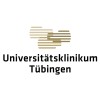
Curettage Versus Excision in Nodular and Superficial Basal Cell Carcinomas
CarcinomaBasal CellBasal cell carcinoma (BCC) is the most frequent skin cancer. Uncontrolled growth destroys local anatomic structures. There are various treatment alternatives with different recurrence rates and expenses. After surgical excision, the recurrence rate is in between 3 and 4% and the procedure is relatively expensive. Photodynamic therapy as well as imiquimod 5% are expensive therapies with high recurrence rates, that lack histologic evidence of BCC. Cryosurgery and curettage are inexpensive, although the recurrence rates are higher than after surgical excision. This prospective, randomized trial compares recurrence rates, cosmetic outcome, and surgery-related complications after curettage versus surgical excision in nodular and superficial BCC. About 600 tumors will be included. One half is treated by curettage, the other half by surgical excision. The follow-up period is four years. If the difference between recurrence rates is ≤7% and the cosmetic outcome as well as the surgery-related complications are not worse after curettage, surgical excision must be considered an overtreatment.

A Bidirectional Study in Exploring the Dynamic Changes of Plasma and Urine Metabolites of Nasopharyngeal...
Nasopharyngeal CarcinomaEBV InfectionThe transformation process of nasopharyngeal carcinoma is complex, so it is particularly important to explore the relationship between various disease states on its clinical pathway. Therefore, we carried out this study to explore the changes of plasma and urine metabolites at different stages during the occurrence and development of nasopharyngeal carcinoma.

Applying Artificial Intelligence to Optimize Early-stage Hepatocellular Carcinoma Treatment Based...
Hepatocellular CarcinomaThis study intends to establish two prognostic models based on contrast-enhanced ultrasound (CEUS) and dynamic enhanced magnetic resonance (DE-MRI) multimodal images: prognostic model of liver cancer patients after hepatectomy and prognostic model of liver cancer patients after radiofrequency ablation. Combined with artificial intelligence imaging omics, traditional imaging omics and clinical information, to predict and compare the prognosis of two different treatment methods for early liver cancer, so as to realize the individual selection of treatment methods for early liver cancer patients

Non-contrast Abbreviated MRI for Secondary Surveillance of HCC
Hepatocellular CarcinomaThis prospective multicenter study aimed to compare the diagnostic performance of non-contrast abbreviated MRI in detecting recurrent HCC after curative treatment to that of contrast-enhanced liver CT.

Evaluation of 18F-TFB PET/CT Scan in Patients With Differentiated Thyroid Cancer
Differentiated Thyroid Gland CarcinomaThyroid Gland Follicular Carcinoma1 moreThis phase II study evaluates F-18 tetrafluoroborate (18F-TFB) PET/CT scan in patients with differentiated thyroid cancer. Diagnostic imaging is necessary for planning treatment, monitoring therapy response, and identifying sites of recurrent or metastatic disease in differentiated thyroid cancer. 18F-TFB PET/CT may accurately detect recurrent and metastatic thyroid cancer lesions, with the potential to provide information for patient management that is better than the current standard of care imaging practices.

Longitudinal Sample Collection to Investigate Adaptation and Evolution of Ovarian High-grade Serous...
Ovarian CancerHigh Grade Serous Carcinoma6 moreIn BriTROC-2, up to 250 women with a confirmed diagnosis of high-grade serous/high-grade endometrioid or carcinosarcoma will be eligible for full consent (Part 2) and registration to BriTROC-2 and will be followed prospectively until first relapse. Women with presumed newly-diagnosed high-grade serous carcinoma of the ovary, fallopian tube or peritoneum can be approached for consent to Part 1 (screening consent) of BriTROC-2 prior to formal diagnosis. The aim of this study is to acquire tumour material at diagnosis and relapse, whole blood for genomic analysis and plasma for ctDNA. This study will also isolate single cells and establish organoid cultures from ascites/peritoneal washings.

A Prospective Exploratory Clinical Study of Metronomic Capecitabine as Adjuvant Therapy in Locoregionally...
to Explore Whether the Adjuvant Therapy of Metronomic Capecitabine Could Improve the Disease-free Survival of Locoregionally Advanced Hypopharyngeal CarcinomaTo explore whether the adjuvant therapy of metronomic capecitabine could improve the disease-free survival of locoregionally advanced hypopharyngeal carcinoma (stage IV:T4N0-1M0,anyTN2-3M0).

SOTO: Treatment Sensitivity of Organoids to Predict Treatment Outcome
Head and Neck Squamous Cell CarcinomaHead and Neck CancerIn this study, we aim to assess whether Patient Derived Organoids can be used to predict treatment sensitivity in HNSCC patients.

Multi-analyte Blood Test Clinical Trial
Liver CirrhosisLiver Cancer2 moreThe objective of this study is the acquisition of whole blood samples and serum samples from participants with untreated Hepatocellular Carcinoma (HCC) and subjects undergoing Hepatocellular Carcinoma (HCC) surveillance. These samples will be used for research purposes to develop and validate the Helio multi-analyte blood test.

Detection and Biopsy Guidance of Nasopharyngeal Carcinoma Based on Artificial Intelligence and Endoscopic...
Nasopharyngeal CarcinomaImage-Guided BiopsyDue to the occult anatomic location of the nasopharynx and frequent presence of adenoid hyperplasia, the positive rate for nasopharyngeal carcinoma identification during biopsy is low, thus leading to delayed or missed diagnosis for nasopharyngeal carcinoma upon initial attempt. Here, we aimed to develop an artificial intelligence tool to detect nasopharyngeal malignancies and guide biopsy under endoscopic examination based on deep learning.
